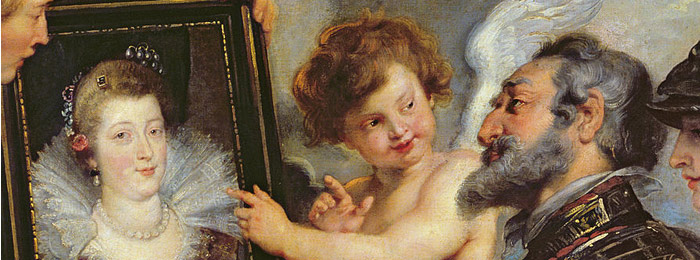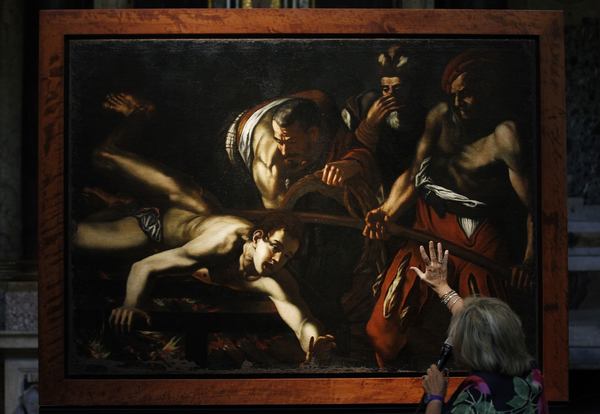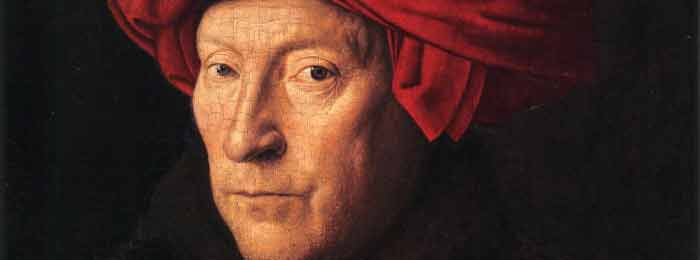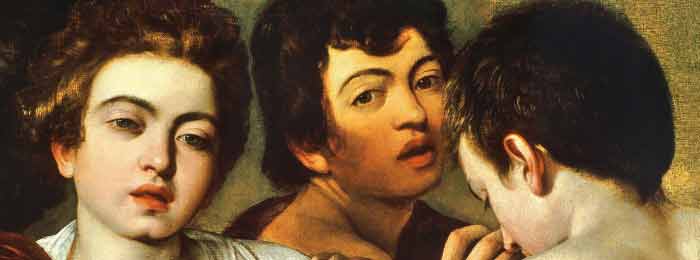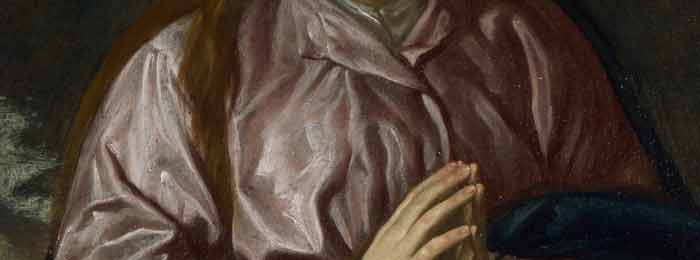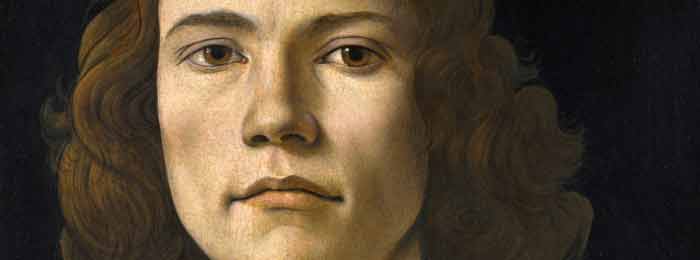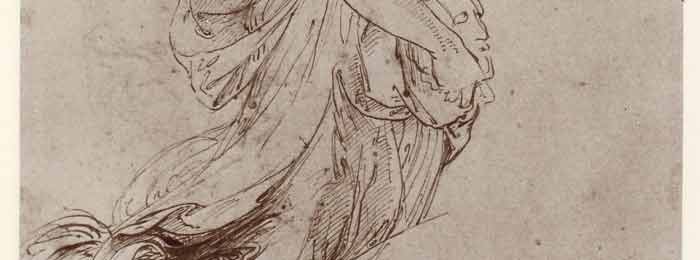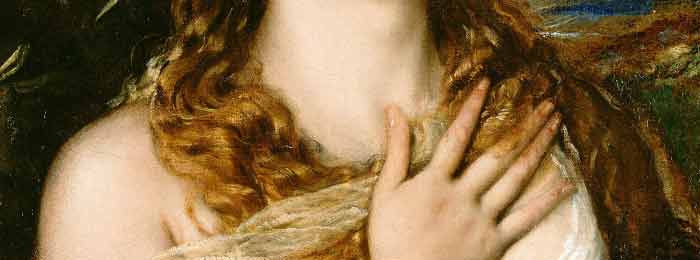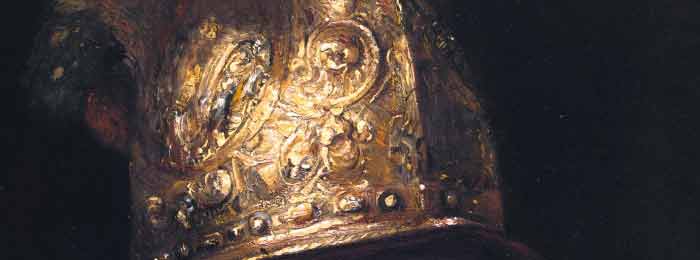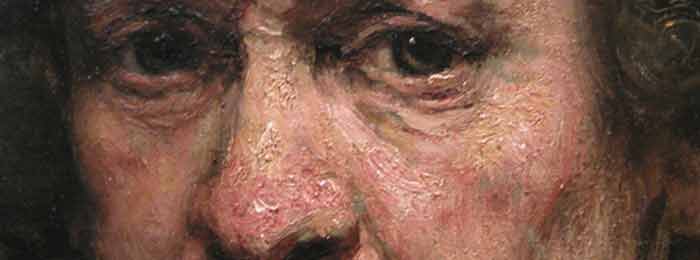On 25 Jun, 2015 With
PETER PAUL RUBENS (1577-1640) With Rubens, we come to the last major transformation of the Oil Painting medium. The changes he brought about in the medium of the later Italians converted it into the most facile and versatile vehicle that any painter has ever had at his disposal. Technically, there seems to have been no limit to its possibilities and Rubens himself. No painter has ever enjoyed a greater or more lasting renown. During his life his atelier had a tremendous reputation, and from the time of his death until our own time, painters of all schools have tried to rediscover his lost secrets; they have copied him – from Antoine Watteau to Paul Cézanne in their efforts to learn…
Read More
On 24 Jun, 2015 With
Article by Nicole Winfield The Vatican’s top art historian has shot down a report in its own newspaper that suggested a recently discovered painting was a Caravaggio. The head of the Vatican Museums, Antonio Paolucci, wrote in the Vatican newspaper L’Osservatore Romano that the work was most likely a copy of an original by a Caravaggio-influenced artist. L’Osservatore set the art world aflutter last week with a front-page article headlined A New Caravaggio detailing the artistry behind the Martyrdom of St. Lawrence, which had been discovered in the sacristy of a Jesuit church in Rome. The author of the article, art historian Lydia Salviucci Insolera, had made clear that she was not making any conclusions about the authenticity of the…
Read More
On 19 Jun, 2015 With
The Oil Painting Technique of Van Eyck With Van Eyck, painting entered a new era. His new technical methods and discovery of a more a pliable medium his colors immediately freed the artist of his time from many of the restraints imposed by the rigidity of the earlier mediums. Transparent glazes of Van Eyck’s oil painting technique allowed all the subtleties of the underlying layers of the painting to show through. This glazing produces the same phenomena as colored glass. A red glass, for instance, does not show the full intensity of its color except by the luminosity of the ground which shows through it. Placed on the earth it will appear dark. Similarly, the quality of the color of…
Read More
On 13 Apr, 2015 With
Venetian Painting Technique The Venetian painting technique was developed from many prior classical painting techniques, and is in effect a culmination of the methods that came before it. The approach to Venetian painting outlined below is a modified version that builds on the Renaissance method, incorporating modern chemicals and a contemporary palette. Venetian painting methods rose to prominence in the 17th century, and were used by painters like Titian, Caravaggio, and Velazquez. The most widespread use of these techniques was witnessed during the Baroque period, and they are ideal for still life painting, portraiture, and compositions that use strong, single-source lighting. The Technique– 1. The first step to creating this type of painting is a basic underdrawing which records the…
Read More
On 24 Feb, 2015 With
Ever since the knowledge of the great oil painting techniques of the Renaissance was so mysteriously lost, about the end of seventeenth century, artists have been trying vainly to rediscover the methods of such masters as Titian, Rubens, Rembrandt and Velasquez, as well as of their predecessors–Jan Van Eyck, Memling, Giovanni Bellini and others, though not allowing for the same facility of execution on a large scale, were nevertheless were nevertheless equally as brilliant and durable. It has been evident to every artist who has worked in the medium of oil paint for the last two centuries or more, that certain qualities of color and modelling and brilliance of surface which seem to have been the common Possession of earlier…
Read More
On 16 Jan, 2015 With
Tempera techniques possessed the great advantage of brilliance and permanence, but they were, at the same time, subject to serious difficulties of management which in many ways limited their possibilities. The so-called early primitive paintings executed in these various tempera mediums possessed a charm of their own, undoubtedly due in some measure to these very limitations of technique. The impossibility of achieving realistic effects and of producing the illusion of the third dimension preserved in them the flat decorative quality for which many are much admired. This decorative effect owes much of its power to the juxtaposition of large masses of color and form, similar to the effects obtained in some of the minor arts. One of the tempera artists’…
Read More
On 9 Sep, 2014 With
It is the problem of the draughtsman to represent on a plane – his Paper, the multiple three dimensional appearances of nature, conveying the impression of light, depth and movement, as well as the texture of materials, by the sole means of the gradations and modelling in the greys as they go from the white of his paper to the darkest value of his drawing instrument. In studying the old masters from this point of view we see that it is possible to establish a hierarchy among them. Mediocre draughtsmen simply do the best they can with nature as they see it. Their eye works like a mirror that contains many imperfections. Portraiture is their largest field of activity because,…
Read More
On 30 Aug, 2014 With
Sometime around the end of the seventeenth century, the painting methods so beloved of the old masters were mysteriously lost—how exactly, no one is really sure. Ever since then, artists have tried and fail to rediscover these techniques, which yielded the masterpieces of Titian, Rubens, Rembrandt and Velasquez. The origins of these techniques can be seen as well in the artists that came before them (Jan Van Eyck, Memling, Giovanni Bellini and others) in a more rudimentary form and always on a much smaller scale, being limited by a lack of proper canvas and materials. For reasons not yet known, something of the inherent magic of oil painting seemed to have dulled after the Renaissance, with a dampening (subtle…
Read More
On 22 Jul, 2014 With
Rembrandt was so pleased with his innovation of glazing over dried impasto that he expanded the practice to other textures, devising a method that utilized different whites for impasto and smoother passages. His impasto white was very “lean” and had egg as an ingredient (meaning it must have dried quite quickly), ground glass, and also white lead, which was used as a binder. He generally applied it with increasing thickness in several stages, whereafter it was finished with transparent glazes and wiping, creating the lustre and dimension he is so well-known for. No other technique produces the same brilliance as Rembrandt’s. When he painted Lieutenant Ruytenburch’s uniform in “The Night Watch,” Rembrandt used this method to build up the dimensions…
Read More
On 8 Jul, 2014 With
The underpainting was a core feature of the Venetian Method, and was often executed in opaque colour, rather than neutral greys. Many colour variations existed on this technique, such as Venetian Red and Flake White, with the only real limitation lying in the fact one ought limit one’s palette to lean paints (paints with a low rate of oil absorption) which are either opaque or very high in tinting strength. High tinting strength paints with a high oil absorption rate (fat paints) may be used only if mixed in minute quantities with very lean paints, so as to keep the underpainting leaner than the layers that will be applied above. Once the colour has dried, it can be modified with…
Read More


